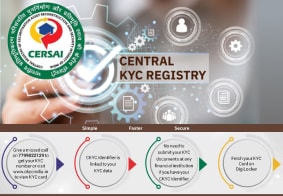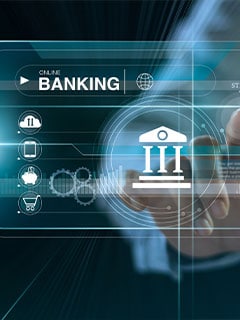CKYC Registry
-
Customer Service Contact us Service request Locate a branch
Find all the help you need
Scan the QR, get our app, and find help on your fingertips

Help CenterSupport topics, Contact us, FAQs and more
-
Login
Are you ready for an upgrade?
Login to the new experience with best features and services
-
Login
Are you ready for an upgrade?
Login to the new experience with best features and services
- Accounts
-
Deposits
IDFC FIRST Bank Deposits
View all Deposits -
Loans
IDFC FIRST Bank Loans
View all Loans - Wealth & Insure
-
Payments
IDFC FIRST Bank Payments
View all Payments -
Cards
IDFC FIRST Bank Cards
View all Cards - Blogs
- Corporate Account
-
Cash Management Services
IDFC FIRST Bank Cash Management Services
View all Cash Management Services - Supply Chain Finance
-
Corporate Lending
IDFC FIRST Bank Lending
View all -
Treasury
IDFC FIRST Bank Treasury
See more details - NBFC Financing
Support topics, Contact us, FAQs and more
- IDFC FIRST Bank Accounts
-
Savings Account
-
Corporate Salary
Account -
Senior Citizens
Savings Account -
First Power
Account -
Current Account
-
NRI Savings
Account -
TASC Institutional
Account -
Savings Account
Interest Calculator
- IDFC FIRST Bank Deposits
-
Fixed Deposit
-
Recurring Deposit
-
NRI Fixed Deposit
-
Safe Deposit Locker
-
FD Calculator
-
RD Calculator
- IDFC FIRST Bank Loans
-
Personal Loan
-
Consumer Durable
Loan -
Home Loan
-
Business Loan
-
Professional Loan
-
Education Loan
-
New Car Loan
-
Pre-owned Car Loan
-
Two Wheeler Loan
-
Pre-owned Two
Wheeler Loan -
Commercial Vehicle
Loan -
Gold Loan
-
Loan Against Property
-
Loan Against Securities
-
Easy Buy EMI card
-
Personal Loan
EMI Calculator -
Education Loan
EMI Calculator -
Home Loan
EMI Calculator
- IDFC FIRST Bank Wealth & Insure
-
FIRST Select
-
FIRST Wealth
-
FIRST Private
-
Mutual Funds
-
Sovereign Gold Bond
-
Demat Account
-
Term Insurance
-
Life Insurance
-
Health Insurance
-
General Insurance
-
Bonds
-
Loan Against
Securities -
Portfolio Management
Service
- IDFC FIRST Bank Payments
-
FASTag
-
Credit Card
Bill Payments -
UPI
-
Funds Transfer
-
Forex services
-
Pay Loan EMI
- IDFC FIRST Bank Cards
-
Ashva :
Metal Credit Card -
Mayura :
Metal Credit Card -
FIRST Millennia
Credit Card -
FIRST Classic
Credit Card -
FIRST Select
Credit Card -
FIRST Wealth
Credit Card -
FIRST WOW!
Credit Card -
Deals
-
Debit Cards
-
Co-branded Cards
-
Credit Card
EMI Calculator -
FIRST Corporate
Credit Card -
FIRST Purchase
Credit Card -
FIRST Business
Credit Card
- Premium Metal Credit Cards
-
AshvaLifestyle1% Forex₹2,999
-
MayuraLifestyleZero Forex₹5,999
-
FIRST PrivateInvite Only
- Best for travellers
-
MayuraZero ForexMetal₹5,999
-
Ashva1% ForexMetal₹2,999
-
FIRST WOW!Zero ForexTravelLifetime Free
-
FIRST SWYPTravel OffersEMI₹499
-
FIRST Select1.99% ForexLifestyleLifetime Free
-
FIRST Wealth1.5% ForexLifestyleLifetime Free
-
Club VistaraTravelLifestyle₹4,999
-
IndiGo IDFC FIRST Dual Credit CardTravelLifestyle₹4,999
- Max benefits, Free for life
-
FIRST Classic10X RewardsShoppingNever Expiring Rewards
-
FIRST Millennia10X RewardsShoppingNever Expiring Rewards
-
FIRST Select10X RewardsLifestyle1.99% Forex
-
FIRST Wealth10X RewardsLifestyle1.5% Forex
-
FIRST WOW!RewardsTravelZero Forex
-
LIC ClassicRewardsInsuranceShopping
-
LIC SelectRewardsInsuranceShopping
- Reward Multipliers
-
AshvaLifestyleMetal₹2,999
-
MayuraLifestyleZero Forex₹5,999
-
FIRST ClassicNever Expiring RewardsShoppingLifetime Free
-
FIRST MillenniaNever Expiring RewardsShoppingLifetime Free
-
FIRST SelectNever Expiring RewardsLifestyleLifetime Free
-
FIRST WealthNever Expiring RewardsLifestyleLifetime Free
- Rewards & Credit on UPI
-
FIRST Power+FuelUPI₹499
-
FIRST PowerFuelUPI₹199
-
FIRST EA₹NVirtual1% Cashback₹499
-
FIRST DigitalVirtualUPI₹199
-
IndiGo IDFC FIRST Dual Credit CardUPITravelDual cards
- Fuel and Savings
-
FIRST PowerRewardsUPI₹199
-
FIRST Power+RewardsUPI₹499
-
LIC ClassicRewardsInsuranceShopping
-
LIC SelectRewardsInsuranceShopping
- Express and Flaunt
-
AshvaMetal1% Forex₹2,999
-
MayuraMetalZero Forex₹5,999
-
FIRST SWYPEMIOfferMAX₹499
-
FIRST MillenniaRewardsShoppingLifetime Free
- FD Backed rewarding Credit Cards for all
-
FIRST EA₹NVirtualCashback₹499
-
FIRST WOW!Zero ForexTravelLifetime Free
-
CreditPro Balance TransferTransfer & SaveReduce InterestPay Smartly
- IDFC FIRST Bank NRI Forex Solutions
-
Send money to India-Wire transfer
-
Send money to India-Digitally
-
Send money abroad
-
Max Returns FD (INR)
- IDFC FIRST Bank MSME Accounts
-
Platinum Current
Account -
Gold
Current Account -
Silver Plus
Current Account -
Merchant Multiplier
Account -
Agri Multiplier
Account -
TASC Institutional
Account -
Dynamic Current
Account -
World business
Account -
First Startup
Current Account
- IDFC FIRST Bank Business Loans
-
Business Loan
-
Professional Loan
-
Loan Against Property
-
Business Loan for Women
-
Working Capital Loan
-
Construction Equipment Loan
-
Machinery Loan
-
Healthcare Equipment Loan
- IDFC FIRST Bank Business Solutions
-
Payment Solutions
-
Tax Payments
-
Doorstep Banking
-
Point of Sale (POS)
-
Escrow Accounts
-
NACH
-
Payment Gateway
-
UPI
-
Virtual Accounts
-
As per amendment in the Income Tax Rules, PAN or Aadhaar are to be mandatorily quoted for cash deposit or withdrawal aggregating to Rupees twenty lakhs or more in a FY. Please update your PAN or Aadhaar. Kindly reach out to the Bank’s contact center on 1800 10 888 or visit the nearest IDFC FIRST Bank branch for further queries.
-
-
Most Searched
Sorry!
We couldn’t find ‘’ in our website
Here is what you can do :
- Try checking the spelling and search
- Search from below suggestions instead
- Widen your search & try a more generic keyword
Suggested
Get a Credit Card
Enjoy Zero Charges on All Commonly Used Savings Account Services
Open Account Now
Mobile Banking
What is the impact of technology on the banking sector in 2022?
Summary: The impact of technology on the banking industry is the witness of speedy & ease of banking service in the country today. IT enabled banks to provide on time banking service. Find Our More!
The banking sector has experienced a tremendous technological revolution that has paved the way for creating newer, better opportunities for its customers. The impact of technology on the banking industry is manifold and can be witnessed with the speed at which banks operate in the country today. Gone are the days of standing in long queues to open an account, receive a physical statement of account, or wait days for loan approval. Each of these processes and more have improved with accuracy and precision, thanks to the positive impact of technology!
The technological disruption in the banking space has encouraged each banking or related entity to adopt this radical shift to sustain and thrive. An absence of this critical business resource could not only lead to poor business decisions and ultimately a failure but also render them irrelevant to the current landscape of meeting banking customer expectations that are increasingly becoming digital savvy.
Let’s understand a few critical changes that have resulted due to the impact of technology on the banking sector and how swiftly banks have adopted them as a part of their internal work process.
READ MORE
Impacts of new age technology
There was a time when huge databases existed in silos, and churning out meaningful data from the same consumed endless time and energy. New age technologies such as Artificial Intelligence (AI) and Machine Learning (ML) have radically shifted the way banking works today. Thanks to AI, it is possible to conduct real-time data analysis from a large volume of data sets and provide customised solutions to banking customers.
With powerful AI tools, banks can make informed decisions faster by using predictive analysis, which is at the core of AI and ML. As soon as a potential customer searches for something online, the AI tools pick it up and serve related content that leads to quick sales. This improves customer service tremendously as tailor-made solutions are provided to the customer without as much human intervention.
Banks’ lending processes have also improved considerably as they can analyse customers’ spending patterns, study different customer data points, and determine borrowers’ creditworthiness. A lot of paperwork has also been reduced owing to this.
Customer-centric banking has become indispensable with the introduction of chatbots and chats agents that utilise Natural Language Processing (NLP) to read, process and understand text and speech. Banks have successfully deployed chatbots to answer customer questions, which has helped them reduce the time and effort of human capital and provide quick and consistent service. Using chatbots, banks are expected to save $7.3 billion in operational costs.
Changing customer profile
The changing profile of banking depends a lot on the digital ecosystem around them to meet their needs, especially the millennial generation. Their expectations from their banks to provide an omni-digital experience have enabled the shift, allowing them to fulfil their banking needs sitting from a remote location. Rightly so, banks quickly jumped onto the digitalisation bandwagon and refreshed their services in line with their requirements.
Mobile banking, for example, has already found deep roots amongst millennials. An Insider Intelligence’s Mobile Banking Competitive Edge study indicated that a staggering 97% of millennials use mobile banking! Right from transferring funds, checking their transactions online, downloading their account statements or even applying for a loan, everything can be done through a click of fingers on their mobile phones. This has also eliminated the need for physical branches, enabling banks to operate in a lean manner and cut unnecessary costs.
The usage of credit cards, debit cards, mobile banking apps, mobile wallets, third-party payment apps, etc., have all shot up considerably, indicating an essential shift in the mindset of customer preferences. Banks have streamlined their processes and broken the barriers between the different entities involved, such as branches, ATMs, and online banking, to create a seamless flow for their customers.
The changing customer profile inclines towards bringing both physical and digital worlds closer, and this is impacting the finance and banking sector favourably. Banks heed this need for digitalisation to retain their customers in the long run.
The emergence of new business models
The pandemic of COVID-19 helped the banking industry to depend heavily on digital technology and tech-enabled systems to stay alive. The aftermath of the pandemic, however, resulted in new beginnings in the form of huge digital transformation and newer business models to be explored for the banks.
Open banking has also gained huge traction recently, allowing open access to consumer banking, financial and other customer data to third-party financial institutions through APIs. It is considered a significant point of innovation for the various parties involved, which has the potential to reshape the entire banking sector.
In Conclusion
The favourable impact of technology can be clearly felt across banking institutions. Even though the banking arena has made huge strides in achieving digital immersion, many more untapped opportunities exist for banks to leverage and uncover. That being said, it remains unto the banks to maintain the sanctity of their customers’ data and serve them with better solutions without having to forego their security. The few challenges the banking sector still has to figure out are data breaches or leaks, lack of e-banking knowledge amongst their customers, and the ever-evolving technological landscape that requires constant training and updating. It is possible to find plausible solutions to the above with a positive partnership between all stakeholders involved, such as government, industry professionals and, of course, different banking institutions.
Amidst this, IDFC FIRST Bank has emerged triumphant in providing viable banking solutions to all its customers through various banking products by leveraging technology.
Disclaimer
The contents of this article/infographic/picture/video are meant solely for information purposes. The contents are generic in nature and for informational purposes only. It is not a substitute for specific advice in your own circumstances. The information is subject to updation, completion, revision, verification and amendment and the same may change materially. The information is not intended for distribution or use by any person in any jurisdiction where such distribution or use would be contrary to law or regulation or would subject IDFC FIRST Bank or its affiliates to any licensing or registration requirements. IDFC FIRST Bank shall not be responsible for any direct/indirect loss or liability incurred by the reader for taking any financial decisions based on the contents and information mentioned. Please consult your financial advisor before making any financial decision.
The features, benefits and offers mentioned in the article are applicable as on the day of publication of this blog and is subject to change without notice. The contents herein are also subject to other product specific terms and conditions and any third party terms and conditions, as applicable. Please refer our website www.idfcfirstbank.com for latest updates.























